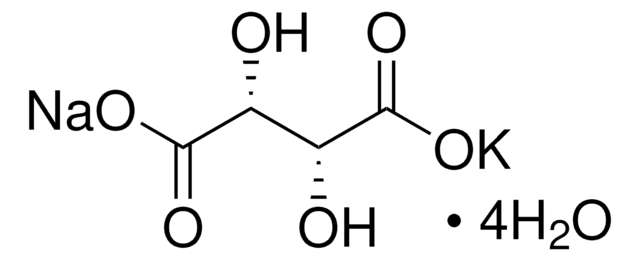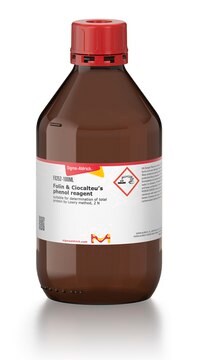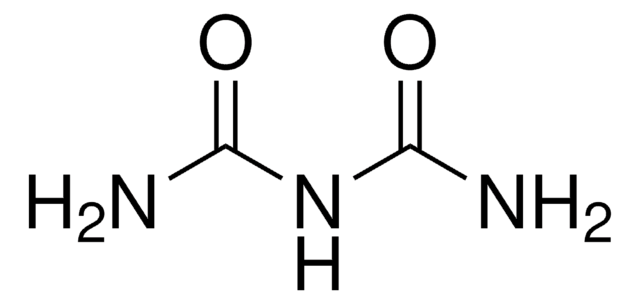36018
Fehling′s reagent I for sugars
reag. Ph. Eur., for determination of sugar, solution I: copper(II) sulfate
Sinónimos:
Copper(II) sulfate solution, Cupric sulfate solution acc. to Fehling, Cupric sulfate standard
About This Item
Productos recomendados
grade
for determination of sugar
Quality Level
agency
USP/NF
reag. Ph. Eur.
concentration
17.6 g/L±0.1 g/L Cu
density
1.038-1.060 g/mL at 20 °C
suitability
in accordance for application
application(s)
food and beverages
general analytical
pharmaceutical (small molecule)
SMILES string
[Cu++].[O-]S([O-])(=O)=O
InChI
1S/Cu.H2O4S/c;1-5(2,3)4/h;(H2,1,2,3,4)/q+2;/p-2
InChI key
ARUVKPQLZAKDPS-UHFFFAOYSA-L
¿Está buscando productos similares? Visita Guía de comparación de productos
General description
signalword
Warning
hcodes
pcodes
Hazard Classifications
Aquatic Acute 1 - Aquatic Chronic 2
Storage Class
12 - Non Combustible Liquids
wgk_germany
WGK 3
flash_point_f
Not applicable
flash_point_c
Not applicable
Elija entre una de las versiones más recientes:
Certificados de análisis (COA)
¿No ve la versión correcta?
Si necesita una versión concreta, puede buscar un certificado específico por el número de lote.
¿Ya tiene este producto?
Encuentre la documentación para los productos que ha comprado recientemente en la Biblioteca de documentos.
Los clientes también vieron
Nuestro equipo de científicos tiene experiencia en todas las áreas de investigación: Ciencias de la vida, Ciencia de los materiales, Síntesis química, Cromatografía, Analítica y muchas otras.
Póngase en contacto con el Servicio técnico










